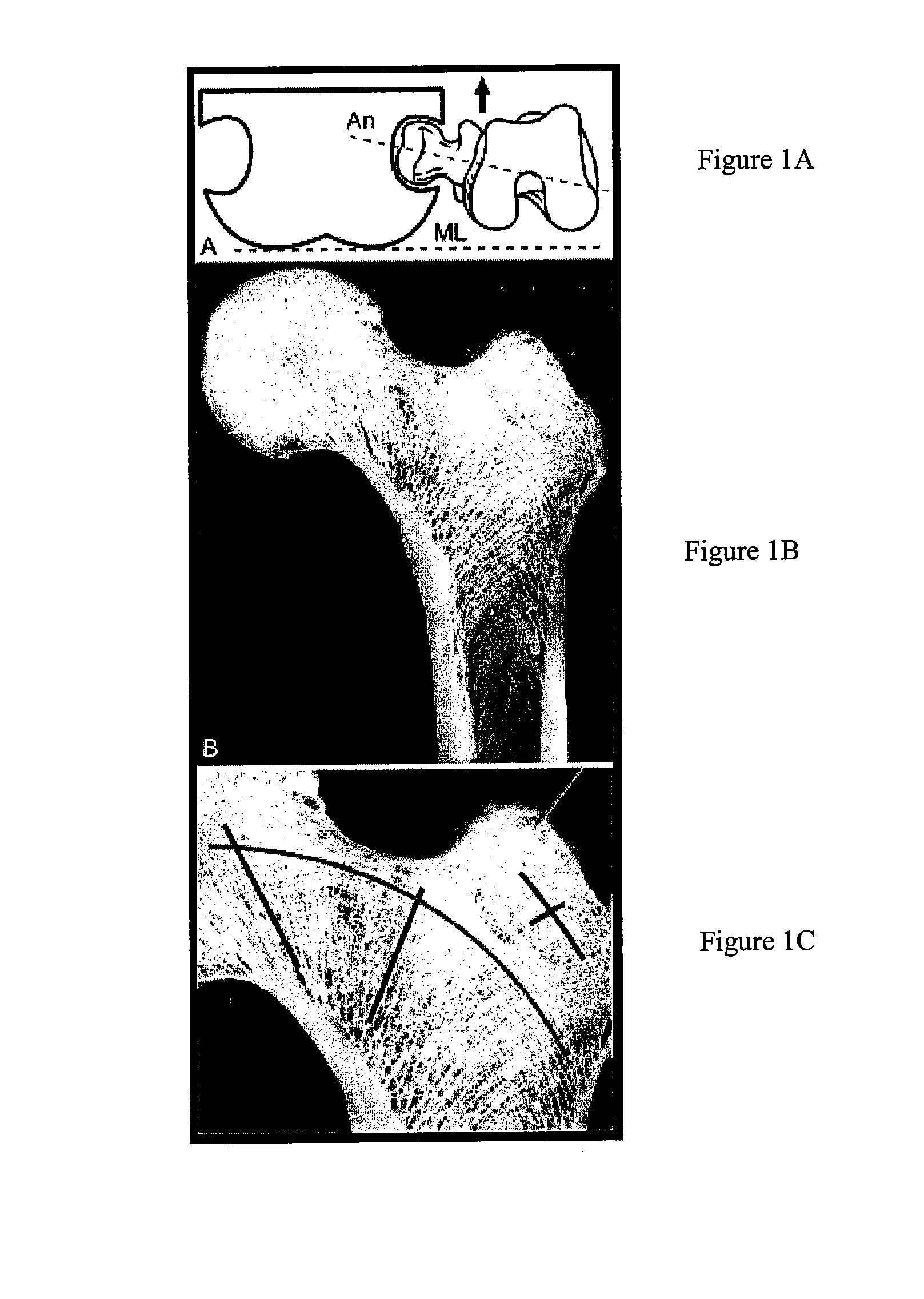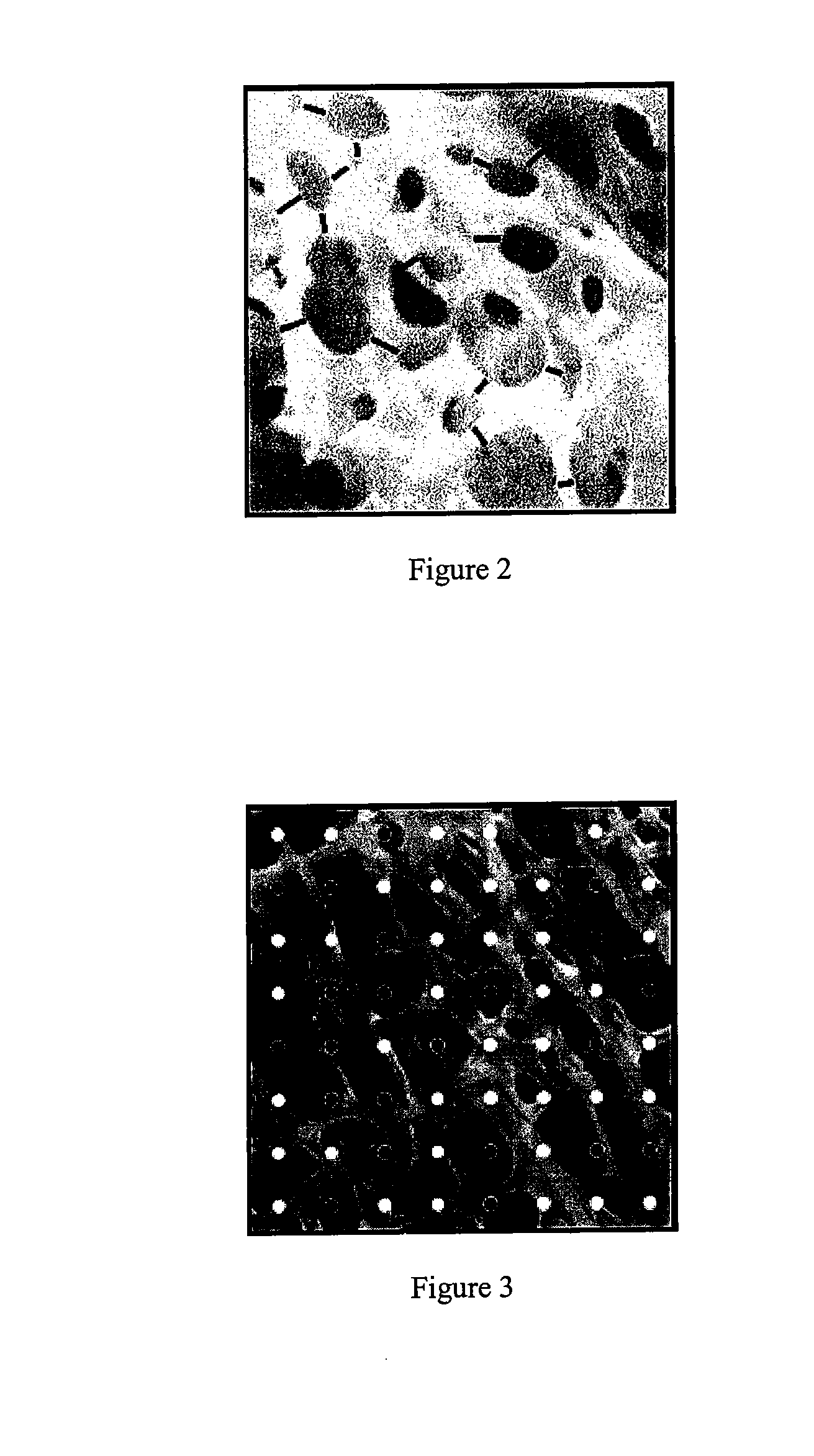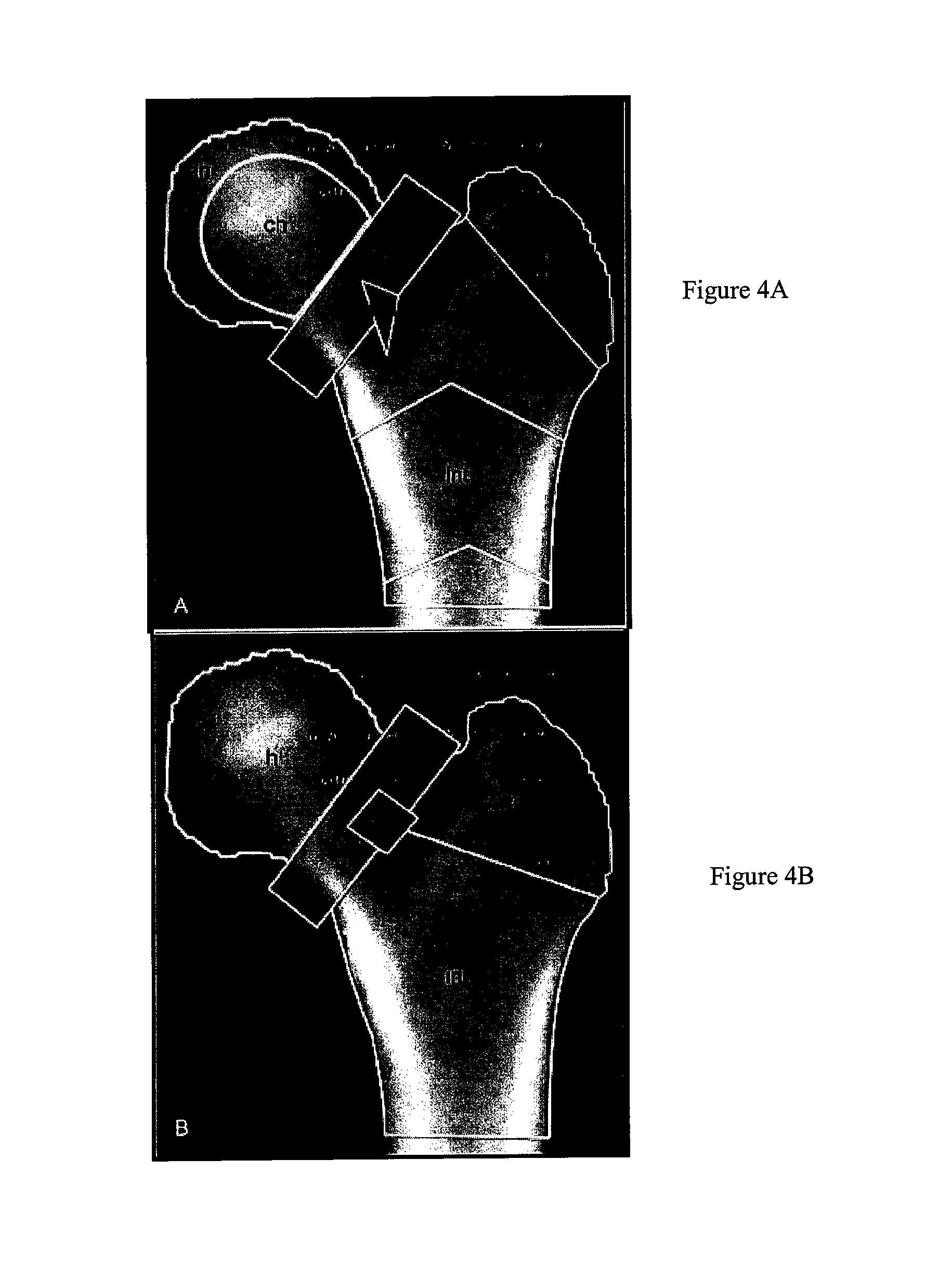Templates for assessing bone quality and methods of use thereof
- Summary
- Abstract
- Description
- Claims
- Application Information
AI Technical Summary
Benefits of technology
Problems solved by technology
Method used
Image
Examples
example 1
Study Of Female Post-Menopausal Proximal Femurs
[0048]This example describes a study of the proximal femur that first seeks to clarify trabecular changes due to the process of aging by analyzing the two trabecular parameters of trabecular thickness and trabecular density in female donors in the sixth and seventh decade of life using histomorphometry based on direct microscopic observation. Second, the two trabecular parameters are correlated with BMD information obtained by DEXA and were found to be independent. With age, mean trabecular thickness and trabecular density were found to vary independently from each other, but dependently by site. Further, the variation of mean trabecular thickness and trabecular density differed between normal and osteopenic / osteoporotic conditions.
[0049]The results of this study provide insight into the alterations in the cancellous bone microstructure at the proximal femur, a clinically-relevant skeletal site, notwithstanding the limitation that this ...
example 2
Study Of Female Post-Menopausal Distal Femurs
[0087]Studies of distal femoral microstructure in non-osteoporotic and osteoporotic patients are important because stress fractures are well-known overuse injuries in active people and osteoporotic patients may not be suitable for knee replacement. The femur is the fourth most common site of stress fractures (see, e.g., Matheson et al., 1987) with injury occurring in the neck, subtrochanteric, shaft, or condylar regions (Glorioso et al., 2002; Boden and Speer, 1997). Studies of site dependent bone microstructure are relevant because bone density decline due to either immobilization or lack of weight-bearing indicates site dependency (see, e.g., Giangregorio et al., 2002).
[0088]This study provides a template that allows the trabecular architectural factors that predispose a patient to sustain a nontraumatic fracture to be associated with the patient's distal femoral DEXA scan. Additionally, this study appraises trabecular thickness changes...
PUM
 Login to View More
Login to View More Abstract
Description
Claims
Application Information
 Login to View More
Login to View More - R&D
- Intellectual Property
- Life Sciences
- Materials
- Tech Scout
- Unparalleled Data Quality
- Higher Quality Content
- 60% Fewer Hallucinations
Browse by: Latest US Patents, China's latest patents, Technical Efficacy Thesaurus, Application Domain, Technology Topic, Popular Technical Reports.
© 2025 PatSnap. All rights reserved.Legal|Privacy policy|Modern Slavery Act Transparency Statement|Sitemap|About US| Contact US: help@patsnap.com



